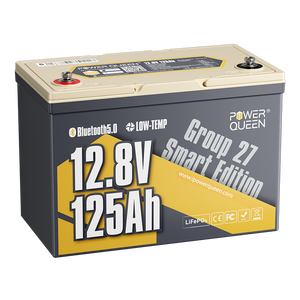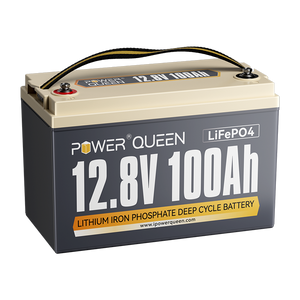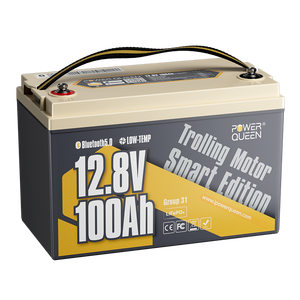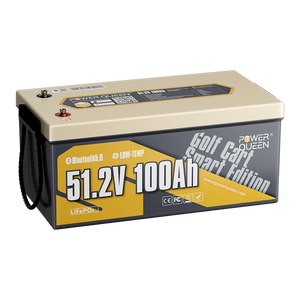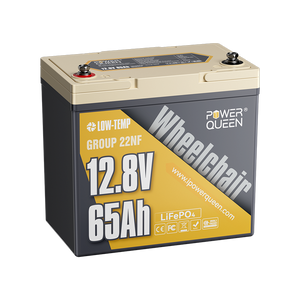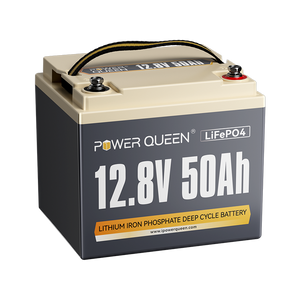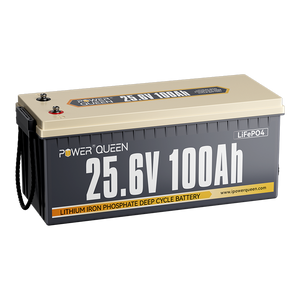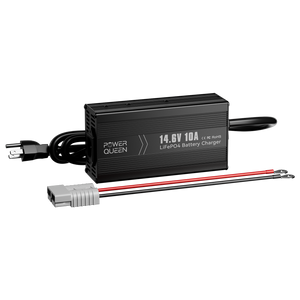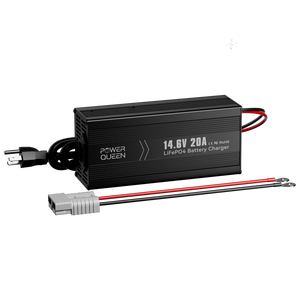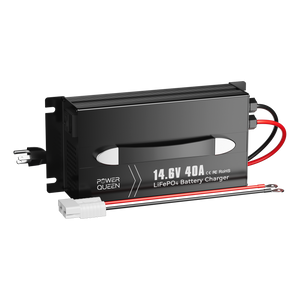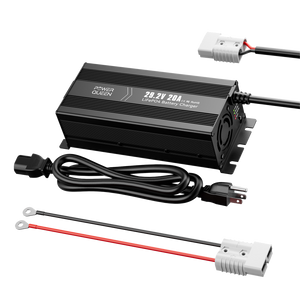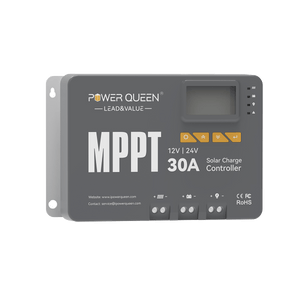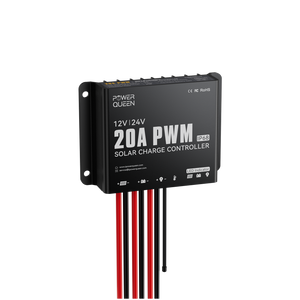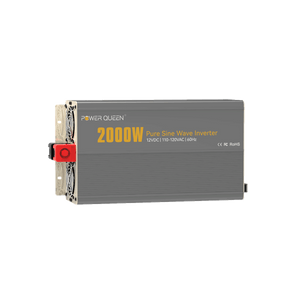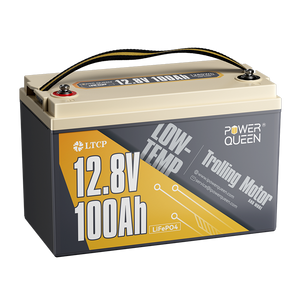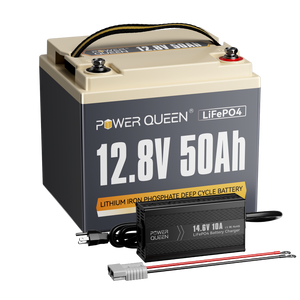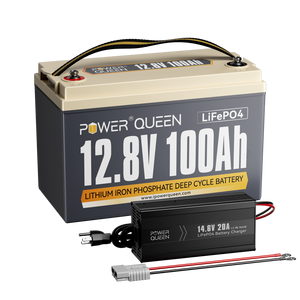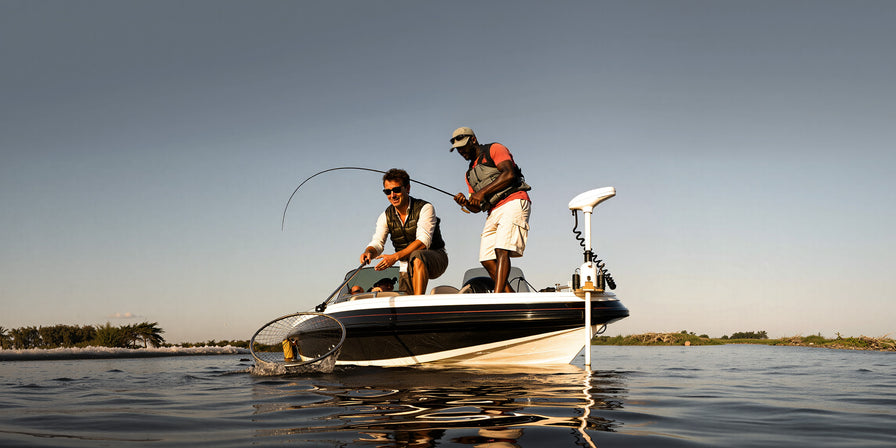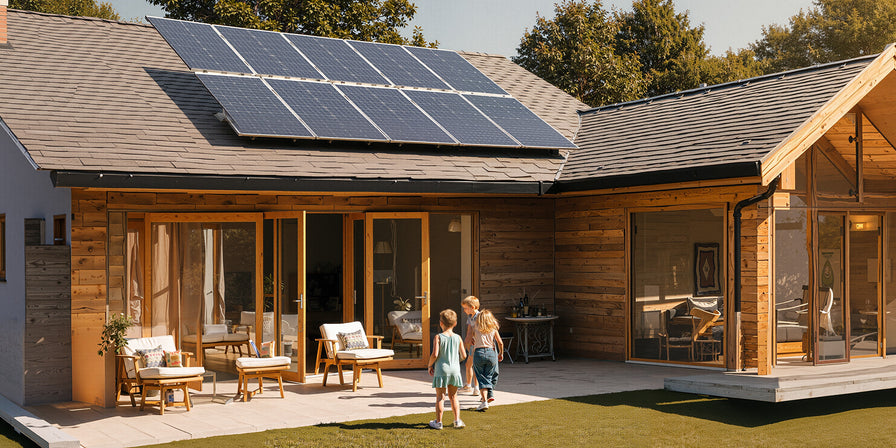Know Everything about Wiring Batteries in Series VS Parallel
When it comes to building a solar power system, one of the most important considerations is how to connect your batteries. Two common methods are connecting batteries in series or parallel. Each method has its advantages and protential issues, so it's crucial to understand the differences between them before deciding which one to use.
Table of Content
- Part 1 Everything about Series Connection
- 1.1 What is Battery Series Connection
- 1.2 The Functions of Series Connection
- 1.3 The Potential Issues of Series Connection
- Part 2 Everything about Parallel Connection
- 2.1 What is Battery Parallel Connection
- 2.2 The Functions of Parallel Connection
- 2.3 The Potential Issues of Parallel Connection
- Part 3 Comparison Between Series and Parallel Connections of LiFePO4 Batteries
- FAQs about Battery Series & Parallel Connection
Part 1 Everything about Series Connection
1.1 What is Battery Series Connection
When it comes to increasing the total voltage output of a battery pack, a series connection of LiFePO4 batteries is often used. This involves connecting multiple cells in sequential order, with the positive terminal of one cell linked to the negative terminal of the next cell until the required voltage is reached. While the overall capacity of the battery pack remains the same as that of a single cell, this method provides an increased voltage output. Due to its ability to provide high voltage, series connection is frequently utilized in applications such as electric vehicles, solar power systems, and backup power supplies for buildings.

Suppose you connect four 12.8V 100Ah batteries in series. In that case, you'll have a combined voltage of 51.2V, while the battery capacity, which is measured in amp hours (Ah), remains unchanged at 100 Ah.
1.2 The Functions of Series Connection
- Increased voltage output: By connecting cells in series, the voltage output is increased to meet the requirements of high-voltage applications.
- Efficient power source: Series connections can provide an efficient power source for devices that require high voltage and low current. This is because the voltage increases while the overall capacity remains the same.
- Battery management: When charging or discharging batteries connected in series, the system can be easily managed by managing the voltages across each cell.
- Safety: Series circuits are less prone to overheating since each cell shares the load equally. Thus, the likelihood of a single cell becoming overloaded or overheated is reduced, which increases the safety of the battery pack.
- Scalability: Series connection allows for scalability, meaning additional cells can be added as required to increase the overall voltage output of the system.
1.3 The Potential Issues of Series Connection
- Reduced overall capacity: While the voltage output increases when cells are connected in series, the overall capacity of the battery system remains the same, meaning less energy can be stored.
- Risk of over-discharge: If any one cell within a series-connected battery pack is discharged below its minimum safe level, it can result in permanent damage or even failure of that cell and possibly other cells in the series.
- Complex management requirements: When cells are connected in series, they must be managed carefully to avoid overcharging or undercharging, which can lead to imbalanced charging and, in turn, affect the overall health of the battery system.
To mitigate these issues, it is crucial to ensure that all cells in the series-connected pack have similar capacities and ages, Powerqueen advises adding new batteries to your battery bank that are bought within three months of your original battery purchase. This helps ensure that your new batteries will have a comparable charge cycle life as your current batteries and can be easily integrated into your existing system. Proper charging and monitoring of the pack's voltage are also essential to prevent overcharging and achieve efficient operation of the battery pack.
Part 2 Everything about Parallel Connection
2.1 What is Battery Parallel Connection
Battery parallel connection refers to connecting multiple batteries positive terminal to positive terminal and negative terminal to negative terminal. In this configuration, the voltage output of the battery bank remains the same as an individual battery, but the overall capacity of the system is increased. Parallel connection is commonly used in applications where high energy storage is required, such as off-grid solar power systems or electric vehicles where extended runtime is a necessity.

For example, you connect four 12.8V 100Ah batteries in parallel. In that case, you'll have a combined capacity of 400Ah, while the voltage remains unchanged at 12.8V.


2.2 The Functions of Parallel Connection
- Increased capacity: The primary function of parallel connection is to increase the overall capacity of the battery system while keeping the voltage output constant.
- Efficient use of energy: Parallel connection allows devices to draw more current without compromising the overall voltage of the system, providing more efficient use of energy.
- Longer runtime: Parallel connection is often used in applications where extended runtime is required, such as off-grid solar power systems or electric vehicles.
- Improved reliability: By combining multiple batteries in parallel, the system becomes less dependent on any single battery, which improves the reliability of the system.
- Easy management: Because each battery in a parallel circuit receives the same voltage, they can be charged and discharged individually without affecting other batteries in the system.
- Scalability: Parallel connections allow for scalability by adding more batteries as required to increase the overall capacity of the system.
2.3 The Potential Issues of Parallel Connection
While parallel connection offers several benefits, it also poses potential risks and challenges that need to be taken into account.
- Increased risk of overcharging and overheating: Parallel connection increases the overall capacity of the battery system, making it easier to draw more current than the batteries can handle, leading to overcharging, overheating, and even fire hazard.
- Difficulty in balancing the charge across batteries: When batteries are connected in parallel, they can become imbalanced due to variations in their capacity or age, leading to reduced performance and lifespan.
- Reduced efficiency: Parallel connections can lead to reduced efficiency since each battery's internal resistance affects the overall resistance of the system, which can reduce the amount of energy delivered to the load.
Part 3 Comparison Between Series and Parallel Connections of LiFePO4 Batteries
In this section, we will discuss the similarities and differences between series and parallel connections of LiFePO4 batteries.

Similarities:
- Ability to increase overall battery performance: Both series and parallel connections can enhance the overall performance of the battery pack. Series connection increases voltage output, while parallel connection increases capacity.
- Use in various applications: Both series and parallel connections are utilized in a variety of applications such as RVs, boats, solar homes, electric vehicles, and other off-grid systems.
Differences:
- Voltage output: Series connection increases the overall voltage output of the battery pack, while parallel connection does not alter the voltage output from an individual cell or battery.
- Capacity: Parallel connection increases the overall capacity of the battery pack, while series connection does not affect the capacity, only voltage output.
- Efficiency: Parallel connection is generally more efficient than series connection since each cell or battery charges and discharges independently, while series connection can be impacted if one cell or battery fails.
In summary, while both series and parallel connections of LiFePO4 batteries have similar advantages, they differ in terms of voltage output, capacity, and efficiency. Choosing which type of connection to use depends on the specific application and desired performance characteristics.
FAQs about Battery Series & Parallel Connection
1. How Many Batteries Can You Wire In Series?
The number of batteries that can be wired in a series typically depends on the battery and its manufacturer. For instance, Powerqueen permits up to 4 of the LiFePO4 batteries to be wired in a series to create a 48-volt system. To prevent exceeding the recommended limit for batteries connected in series, it is crucial to verify with the battery manufacturer.
2. How Many Batteries Can You Wire In Parallel ?
In general, there is no limit to how many batteries can be connected in parallel as long as they are identical and have the same specifications. However, it is essential to ensure that the wire size and the battery's charging system can handle the increased current draw from the parallel connection. It is always recommended to follow the manufacturer's guidelines and seek professional advice when connecting multiple batteries in parallel to ensure optimal performance and safety.
3. Do Batteries Last Longer in Series or Parallel?
Batteries connected in series and parallel have different effects on their lifespan, so it is difficult to make a definitive statement about which connection type makes batteries last longer.
In series connection, batteries are linked together with positive terminals connected to negative terminals, resulting in an increased voltage output. This configuration can cause the battery to be exposed to more stress and heat, which could reduce its overall lifespan. If one cell fails or deteriorates, it can negatively impact the whole battery pack.
On the other hand, in parallel connection, batteries are linked together with positive terminals connected to positive terminals and negative terminals connected to negative terminals. The voltage output remains the same as a single battery, but the capacity is boosted. Parallel connection spreads out the load across the cells more evenly, reducing the risk of overheating and reducing the chance of premature failure due to overloading.
Overall, batteries' lifespan depends on various factors, including the type of battery, usage patterns, maintenance, and temperature conditions. Whether batteries last longer in series or parallel will depend on the specifics of the situation. It's always best to follow the manufacturer's recommendations and seek expert advice when connecting multiple batteries in series or parallel to ensure optimal performance, safety, and longevity.
Conclusion
In conclusion, when building a solar power system or other off-grid systems, it is important to choose the right connection type for your batteries. Both series and parallel connections have their advantages and disadvantages, and the choice will depend on your specific needs and application.
Series connection is ideal for applications requiring high voltage, while parallel connection provides increased capacity for longer runtime. Each connection method has its potential issues, such as the risk of overheating or reduced efficiency. To mitigate these risks, proper battery management and maintenance are crucial.
When connecting batteries in series or parallel, it is recommended to follow the manufacturer's guidelines and seek expert advice to ensure optimal performance, safety, and longevity. With the right connection type and proper battery management, you can maximize your battery pack's performance and energy storage capabilities for off-grid applications.
